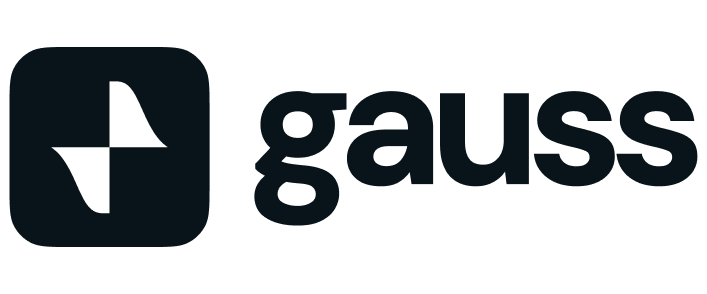It’s official: Student loan payments will resume in October, Education Department says

Student loans have become a crucial aspect of higher education in the United States. Most students rely on these loans to fund their college or university education, with the expectation that they will repay them after graduation when they secure a job. However, the burden of student loan debt has grown exponentially over the years, leaving many graduates struggling to meet their repayment obligations.
The concept of student loans is simple. A student or their parents borrow money from a lending institution or the federal government to pay for tuition, books, housing, and other education-related expenses. The borrower then repays the loan over a specified period, typically after graduation. The loans accrue interest over time, increasing the total amount a borrower owes.
Despite their usefulness, student loans have become a significant financial burden to many. The high cost of education coupled with the daunting reality of unemployment and low wages has made it increasingly difficult for graduates to repay their loans, leading to a national crisis that has caught the attention of lawmakers and the public.
Overview of Student Loan Debt in the U.S.
Student loan debt in the U.S. has skyrocketed over the past decade. According to the Federal Reserve, Americans owed over $1.7 trillion in student loan debt by the end of 2020. This figure represents a more than 100 percent increase from a decade ago. The massive amount of debt is not just an issue for individual borrowers but also a significant concern for the national economy.
The rising cost of higher education is largely to blame for the increasing student loan debt. Tuition fees have been rising at a faster rate than inflation, pushing many students to borrow more to keep up with the escalating costs. Additionally, the sluggish wage growth and high unemployment rates among recent graduates have made it difficult for them to repay their loans, leading to high default rates.
The issue of student loan debt is not just about numbers. It's about the lives of millions of Americans who have been crippled by this debt. It's about the dreams that have been deferred and the opportunities that have been lost due to the burden of student loan debt. It's about the need for reform and relief.
The Supreme Court and Student Loan Debt Relief
The issue of student loan debt relief has reached the highest level of the judicial system — the Supreme Court. In recent years, the Supreme Court has been asked to weigh in on several cases related to student loan debt relief. These cases have involved issues such as the dischargeability of student loans in bankruptcy and the powers of the Education Department in managing and collecting student loans.
The Supreme Court's decisions on these cases have had significant implications for borrowers. For instance, the court's ruling that student loans can only be discharged in bankruptcy under "undue hardship" has made it nearly impossible for most borrowers to have their loans forgiven through bankruptcy. This has left many borrowers with no option but to continue repaying their loans regardless of their financial circumstances.
However, the Supreme Court has also made rulings that have provided some relief for borrowers. For example, the court has upheld the power of the Education Department to forgive loans for students who have been defrauded by their schools. This has provided a lifeline for thousands of students who were misled by predatory schools.
The Role of the Education Department Concerning Student Loans
The Education Department plays a vital role in the administration of federal student loans. It is responsible for developing and implementing policies related to student loans, including setting interest rates, determining eligibility criteria, and managing loan repayment and forgiveness programs.
The Education Department also oversees the collection of student loans. This involves working with loan servicers to ensure that borrowers are making their payments and taking action against those who default on their loans. The department has the power to garnish wages, withhold tax refunds, and take other measures to recover defaulted loans.
However, the role of the Education Department has been a subject of controversy and litigation. Critics argue that the department has not done enough to protect students from predatory lending practices and has failed to provide adequate relief for borrowers who are struggling to repay their loans. These criticisms have led to calls for reforms and increased oversight of the department.
The Official Announcement: Student Loan Payments to Restart in October
After months of speculation and anticipation, the Education Department has officially announced that student loan payments will restart in October. This announcement comes after a period of temporary relief for borrowers due to the Covid-19 pandemic. During this period, loan payments were suspended, and interest rates were set to zero to help borrowers cope with the economic fallout from the pandemic.
The resumption of student loan payments has been met with mixed reactions. Some people view it as a necessary step towards normalcy and fiscal responsibility. They argue that the temporary relief was meant to be just that – temporary – and that borrowers should be prepared to resume their obligations.
On the other hand, others see this move as premature and insensitive to the continuing economic struggles that many borrowers are facing. They argue that many borrowers are still reeling from the effects of the pandemic and are not in a position to resume their loan payments.
How This Decision Affects Students and Graduates
The decision to restart student loan payments in October will have a significant impact on students and graduates. For many, it will mean having to tighten their belts and make tough financial decisions. Some might have to defer other financial goals such as saving for a house or starting a family to meet their loan repayment obligations.
This decision will also put a lot of pressure on recent graduates who are still struggling to find stable employment. These graduates will be expected to start repaying their loans despite the uncertain job market and their limited financial resources.
However, there are also those who will be unaffected or even relieved by the decision. These are mostly borrowers who have stable jobs and have managed to save some money during the payment suspension period. For them, the resumption of loan payments means a return to normalcy and a step closer to being debt-free.
Possible Solutions and Tips for Managing Student Loan Debt
Despite the challenges, there are ways for borrowers to manage their student loan debt effectively. One of the most important things is to understand your loans. This includes knowing the amount you owe, the interest rate, and the repayment terms. This information will help you make informed decisions about your loans.
Another important tip is to prioritize your loans. If you have multiple loans, focus on repaying the ones with the highest interest rates first. This can save you a lot of money in the long run. You should also consider consolidating your loans. This can simplify your repayment process and potentially lower your monthly payments.
If you are struggling to make your loan payments, don't hesitate to seek help. There are several resources available to help borrowers manage their student loan debt. These include income-driven repayment plans, loan forgiveness programs, and loan deferment and forbearance options. These programs can provide temporary relief and help you get back on track with your loan repayments.
The Future of Student Loan Debt Relief
The future of student loan debt relief remains uncertain. There are ongoing debates about the need for widespread loan forgiveness and the role of the federal government in providing relief for borrowers. Some lawmakers and advocates argue for the cancellation of all or a significant portion of student loan debt, while others propose more targeted relief measures.
Regardless of the outcome of these debates, it is clear that the issue of student loan debt relief will continue to be a major concern for many Americans. As the cost of higher education continues to rise and the burden of student loan debt continues to weigh heavily on borrowers, the demand for comprehensive and effective relief measures will only increase.
Response from the Public and Financial Experts
The announcement of the resumption of student loan payments has elicited a wide range of responses from the public and financial experts. Many borrowers have expressed their frustration and anxiety over the decision. They argue that the economic impact of the pandemic is still being felt and that many people are not in a position to resume their loan payments.
Financial experts, on the other hand, have offered a more nuanced perspective. While they acknowledge the challenges that many borrowers are facing, they also point out that the suspension of loan payments was never intended to be a permanent solution. They argue that the focus should be on providing long-term solutions such as loan forgiveness and income-driven repayment plans.
Conclusion
The announcement by the Education Department that student loan payments will restart in October marks a significant turning point in the ongoing saga of student loan debt in the U.S. While it signals a return to normalcy for some, it also highlights the urgent need for comprehensive and effective student loan debt relief measures. As the nation continues to grapple with this issue, the hopes and dreams of millions of students and graduates hang in the balance.
Do you have unpaid credit cards?
Gauss money can help pay off your credit cards easily. Pay off any credit card balance using a low-interest credit line from Gauss. You’ll save with a lower APR and you can pay off balances faster. Gauss offers no annual fees, no origination fees, and no fees of any kind. Check out Gauss for a lower APR today to maximize your credit cards.
Additionally, use tools like the credit card payoff calculator to visualize your progress overtime, and get insights into how much you should put towards your debt to achieve your debt free date. Our debt payoff calculator and debt tracker is 100% free to use via our website or our mobile app.
